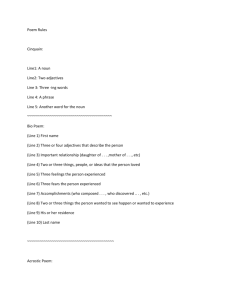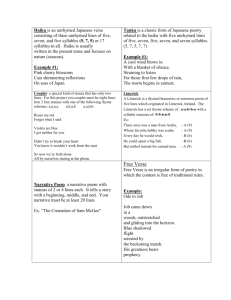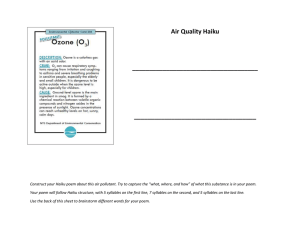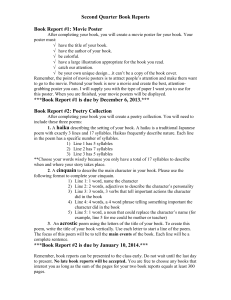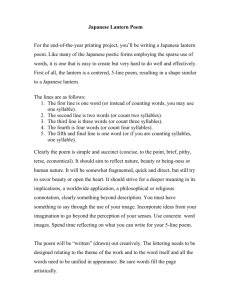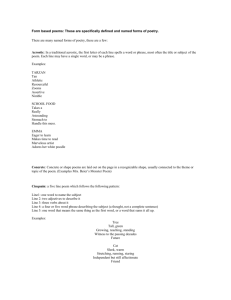ENG4U1 Introduction
advertisement
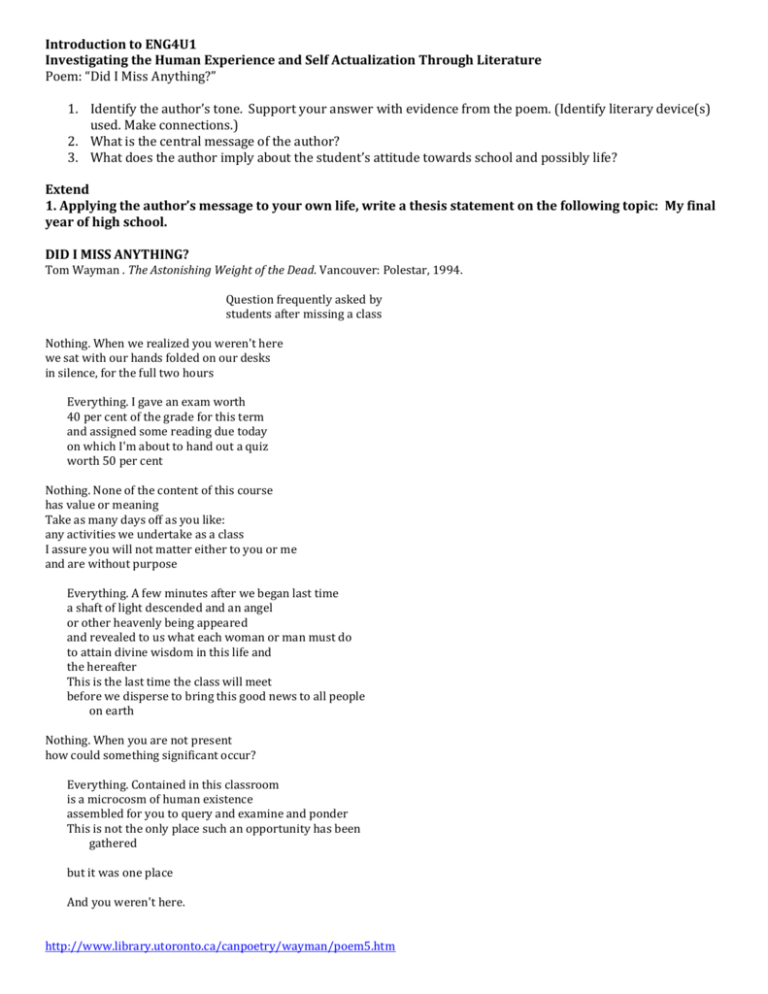
Introduction to ENG4U1 Investigating the Human Experience and Self Actualization Through Literature Poem: “Did I Miss Anything?” 1. Identify the author’s tone. Support your answer with evidence from the poem. (Identify literary device(s) used. Make connections.) 2. What is the central message of the author? 3. What does the author imply about the student’s attitude towards school and possibly life? Extend 1. Applying the author’s message to your own life, write a thesis statement on the following topic: My final year of high school. DID I MISS ANYTHING? Tom Wayman . The Astonishing Weight of the Dead. Vancouver: Polestar, 1994. Question frequently asked by students after missing a class Nothing. When we realized you weren't here we sat with our hands folded on our desks in silence, for the full two hours Everything. I gave an exam worth 40 per cent of the grade for this term and assigned some reading due today on which I'm about to hand out a quiz worth 50 per cent Nothing. None of the content of this course has value or meaning Take as many days off as you like: any activities we undertake as a class I assure you will not matter either to you or me and are without purpose Everything. A few minutes after we began last time a shaft of light descended and an angel or other heavenly being appeared and revealed to us what each woman or man must do to attain divine wisdom in this life and the hereafter This is the last time the class will meet before we disperse to bring this good news to all people on earth Nothing. When you are not present how could something significant occur? Everything. Contained in this classroom is a microcosm of human existence assembled for you to query and examine and ponder This is not the only place such an opportunity has been gathered but it was one place And you weren't here. http://www.library.utoronto.ca/canpoetry/wayman/poem5.htm Poetry Slam: The Haiku The haiku is a form of verse invented in Japan centuries ago. The haiku is a short three-line poem with the following structure: Five syllables Seven syllables Five syllables The words speak of a mood, a strong feeling, or an atmosphere. Although the poem is usually about nature, a person’s thoughts and emotions are often included. This form generally presents one simple observation, and no more. But this one visual image creates a tension designed to make the reader think. This tension is usually produced by presenting a contrast and forcing the reader to make the connections between the seemingly disjointed parts of the image. The impact of the poem is like that of a pebble tossed into a stream. As you read the poem, it ripples your imagination, expanding and developing as you sense and share the experience of the poet. Its form is ideal for reflective thought. Examples of Haiku poetry Life Lesson (translated from Japanese, resulting in additional syllables) Don Raye The fierce wind rages And I see how trees survive – They have learned to bend. New Year’s Day Basho The first day of the year: Thoughts come—and there is loneliness; The autumn dusk is here. Extend Write a haiku poem on the human emotion assigned. Be ready to share your poem on the following day.

